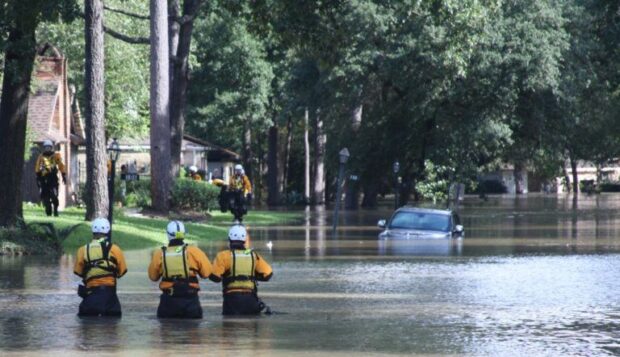An examination of electric vehicles damaged by Florida floods raises questions about the “stranded energy” contained within their batteries, according to researchers at the Idaho National Laboratory.
A request by the National Highway Traffic Safety Administration prompted the study when spontaneous EV fires were reported after accidental EV immersion.
The vehicles, just a few of the between 3,000-5,000 EVs damaged during Hurricane Ian, were transported to the Idaho laboratory to evaluate safety concerns related to flooded EV batteries.
Of the EVs damaged, 600 were a total loss and 36 EVs caught on fire, according to the INL report submitted to the NHTSA. The report noted that in some instances, the fire erupted while the impacted EVs were being towed on flatbed trailers.
According to author Michelle Goff, sea-water flooded vehicles can pose significant risks, including fire. Thermal runaway, an uncontrollable increase in temperature, she explained, is just one way in which a fire can start.
The vehicles studied revealed varying degrees of water infiltration but did not result in catastrophic events related to the batteries. Even so, said Goff, the researchers found evidence of mold and corrosion resulting from seawater submersion that could present safety issues if the vehicle remained operational.
An immersion test facility is being built by researchers to continue their study of water-damaged EV batteries.
Battelle Energy Alliance manages INL for the U.S. Department of Energy’s Office of Nuclear Energy. INL is the nation’s center for nuclear energy research and development, celebrating 75 years of scientific innovations in 2024. The laboratory performs research in each of DOE’s strategic goal areas: energy, national security, science and the environment.





















 1 in 6 Americans Report Feeling Stressed Every Day
1 in 6 Americans Report Feeling Stressed Every Day  Revisiting California’s Wildfires: A Personal Journey
Revisiting California’s Wildfires: A Personal Journey  Bill Aims to Make Staged Accidents a Federal Crime
Bill Aims to Make Staged Accidents a Federal Crime  No Escape From Tariffs — Not Even for D&O Liability Insurers
No Escape From Tariffs — Not Even for D&O Liability Insurers 





